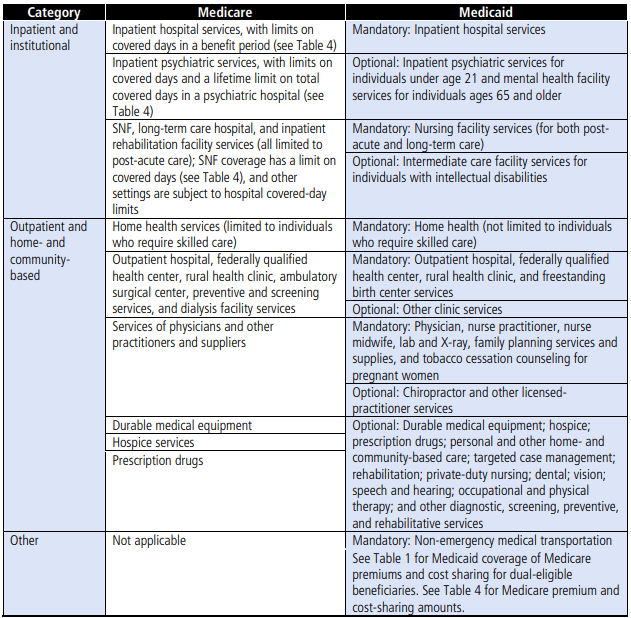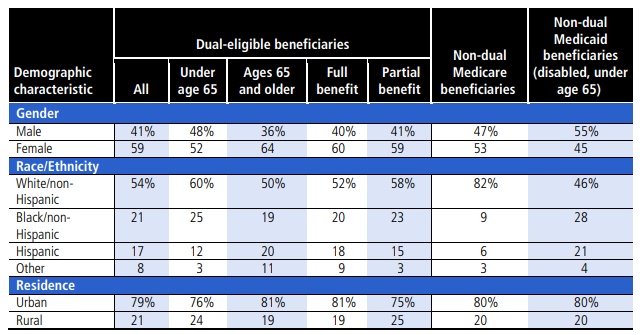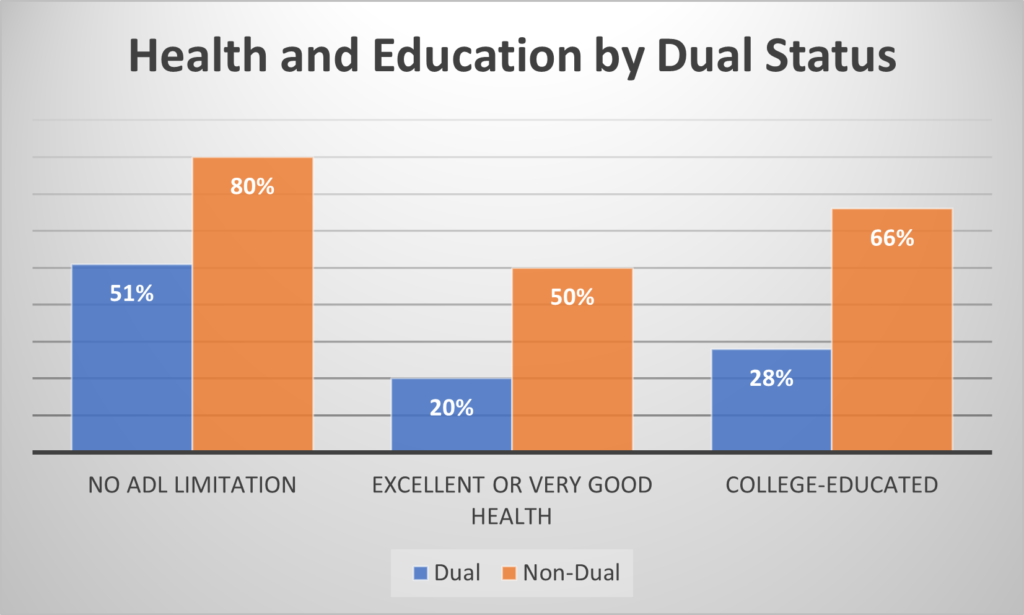Dual eligibles: A statistical overview

Medicare covers largely elderly individuals, the disabled, and individuals with end stage kidney disease. Medicaid covers low-income individuals. So who are dual eligibles, that qualify for both programs?
The Medicaid and CHIP Payment and Access Commission (MACPAC) and the Medicare Payment Advisory Commission (MedPAC) put out a report last year providing a summary of the characteristics, expenditures, and health care utilization of these dual eligibles.
First, the report describes who pays for what for dual eligibles:
For dual-eligible beneficiaries, Medicare is the primary payer for acute and post-acute care services covered by that program. Medicaid provides varying levels of assistance with Medicare premiums and cost sharing and, for many beneficiaries, covers services not included in the Medicare benefit, such as long-term services and supports (LTSS). Full-benefit dual-eligible beneficiaries receive the full range of Medicaid benefits offered in a given state. For partial-benefit dual-eligible beneficiaries, Medicaid pays Medicare premiums and may also pay the cost sharing for Medicare services.
For dual eligibles, Medicaid can be seen as a wrap-around insurance, covering certain services and cost sharing that Medicare does not. The table below summarizes which services are covered by which program.
In 2019, there were 12.2 millions beneficiaries who every qualified as dual eligible during the year. This represents 19.3% (12.2m of 63.1m) of Medicaid beneficiaries or 13.6% (12.2m of 89.8m) Medicare beneficiaries. While over 92% of Medicare individuals are aged 65 and above, among dual eligible only 62% of individuals was aged 65 and older. For Medicaid beneficiaries who are not dual eligible, only 1.2% are aged 65 and older. Additionally, while only 15% of non-dual eligible beneficiaries qualified for Medicare coverage due to disability, 51% of dual eligibles qualified for Medicare due to disability. More detail demographic information is below.

Dual eligible beneficiaries have significantly higher Medicare expenditures compared to non-duals. For non-ESRD individuals, spending is $10,887 (107%) higher compared non-duals and for ESRD it is $26,650 higher (41%) as shown in the figure below. Aggregate spending on dual eligibles was $440.2 billion, with Medicare paying $275.9 billion and Medicaid $164.3 billion.


In terms of health and education, dual eligibles are significantly sicker and are less educated.

The full report has many more useful graphics and you can read it here.




